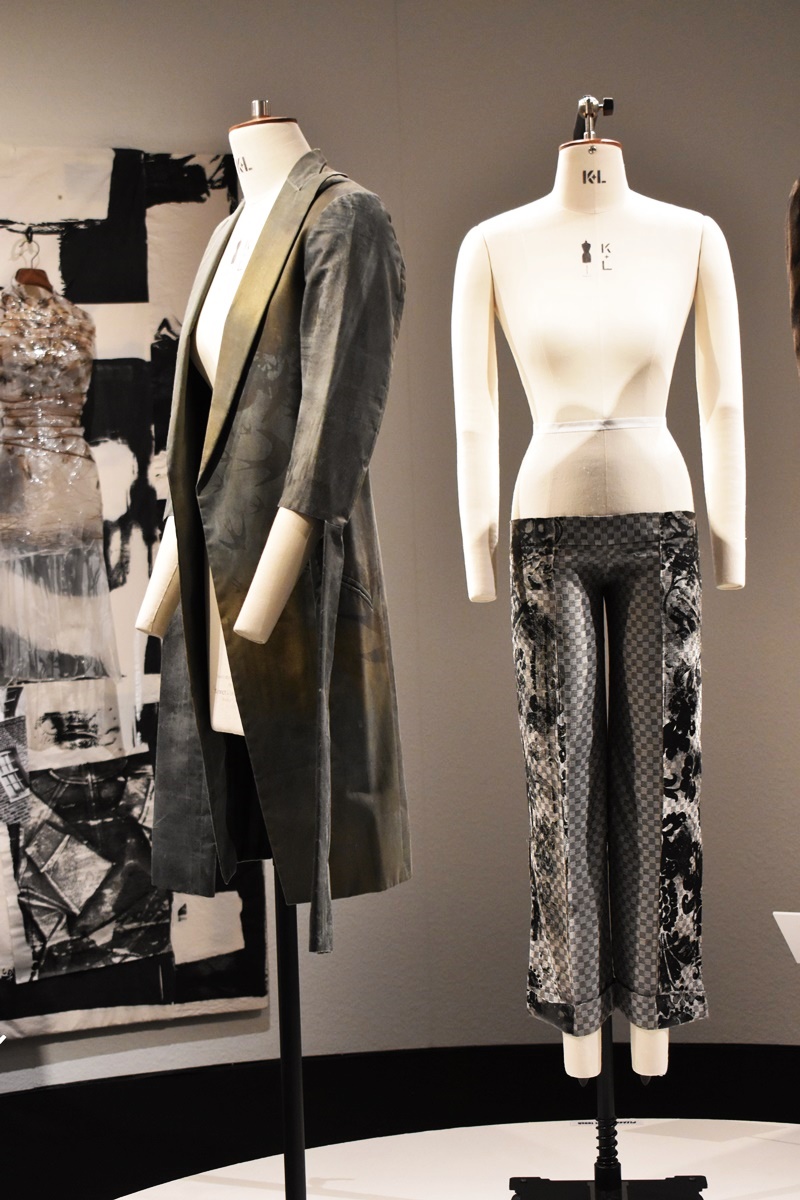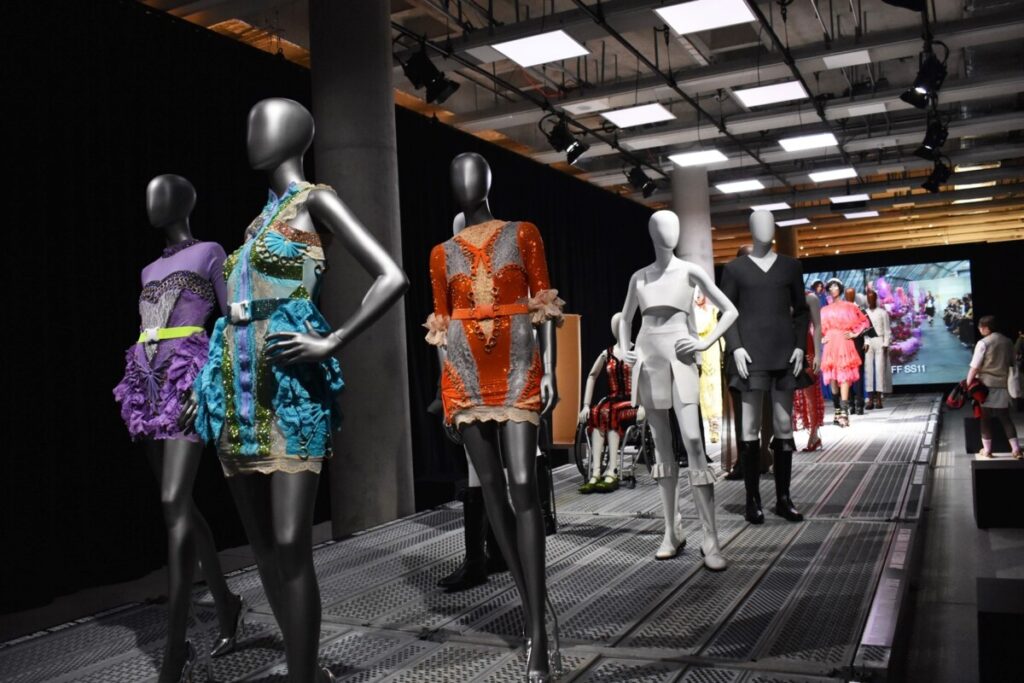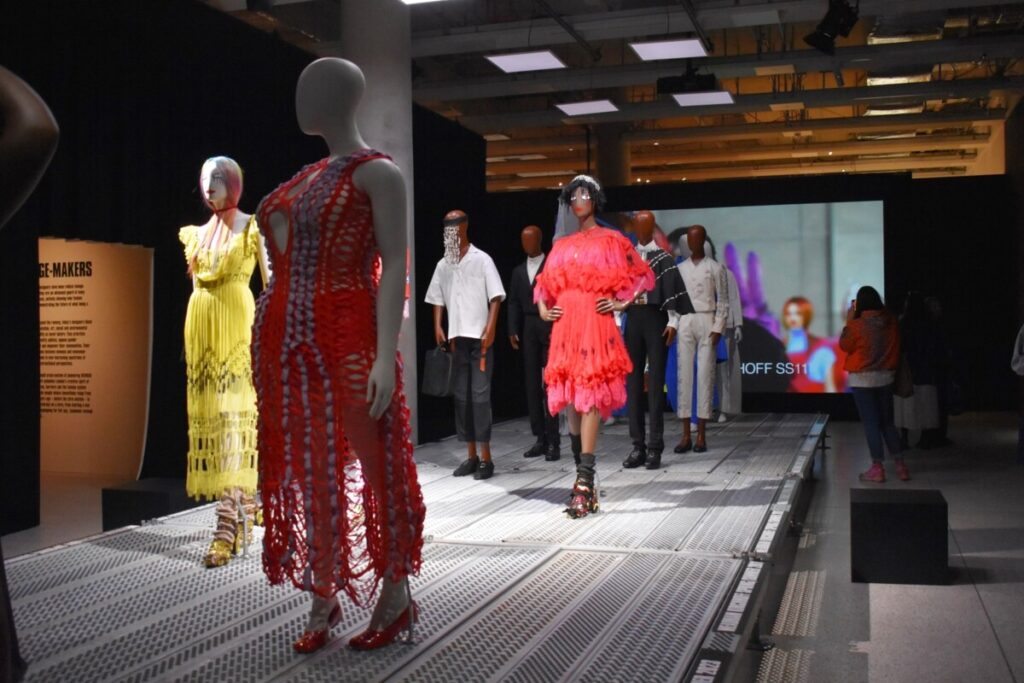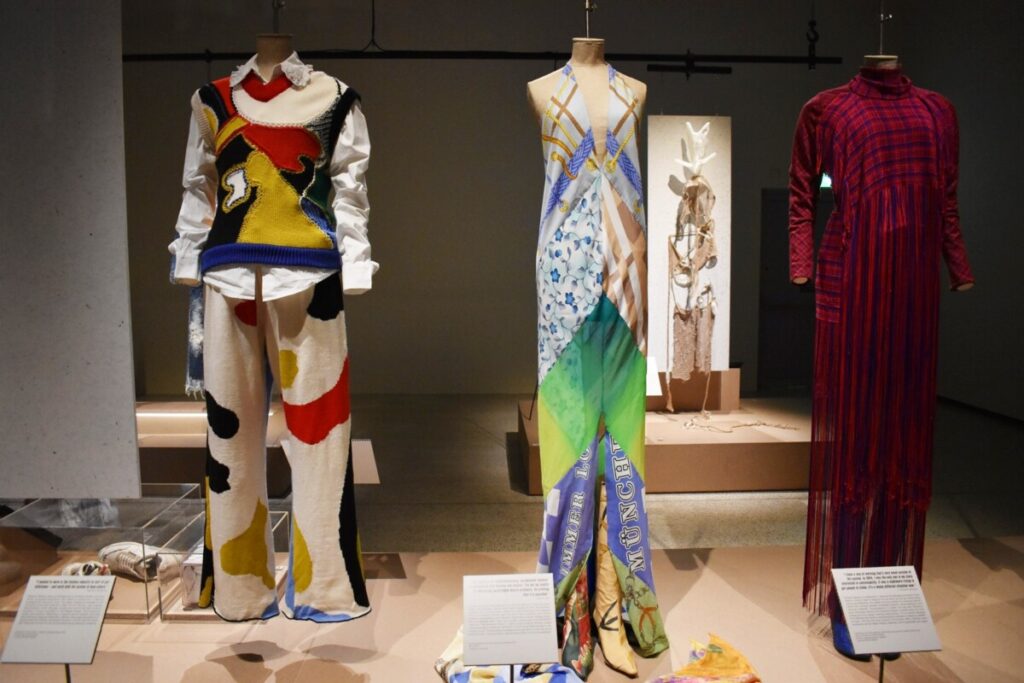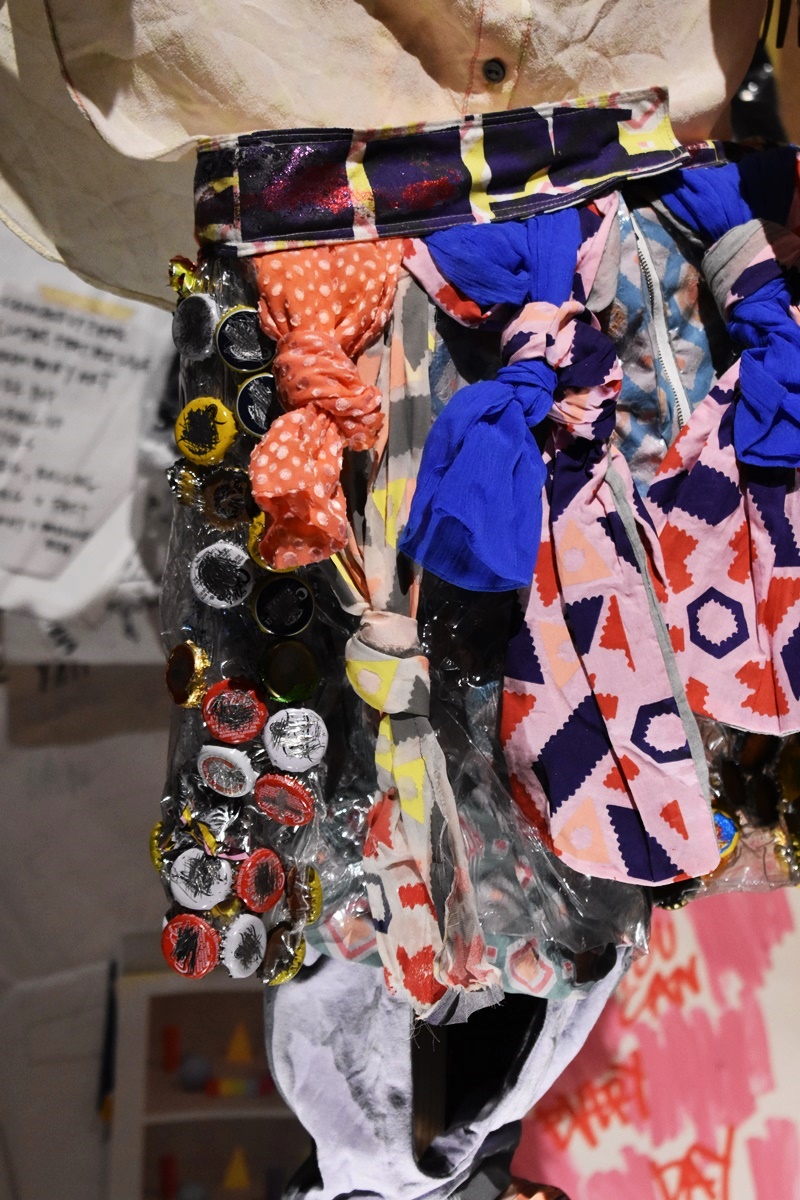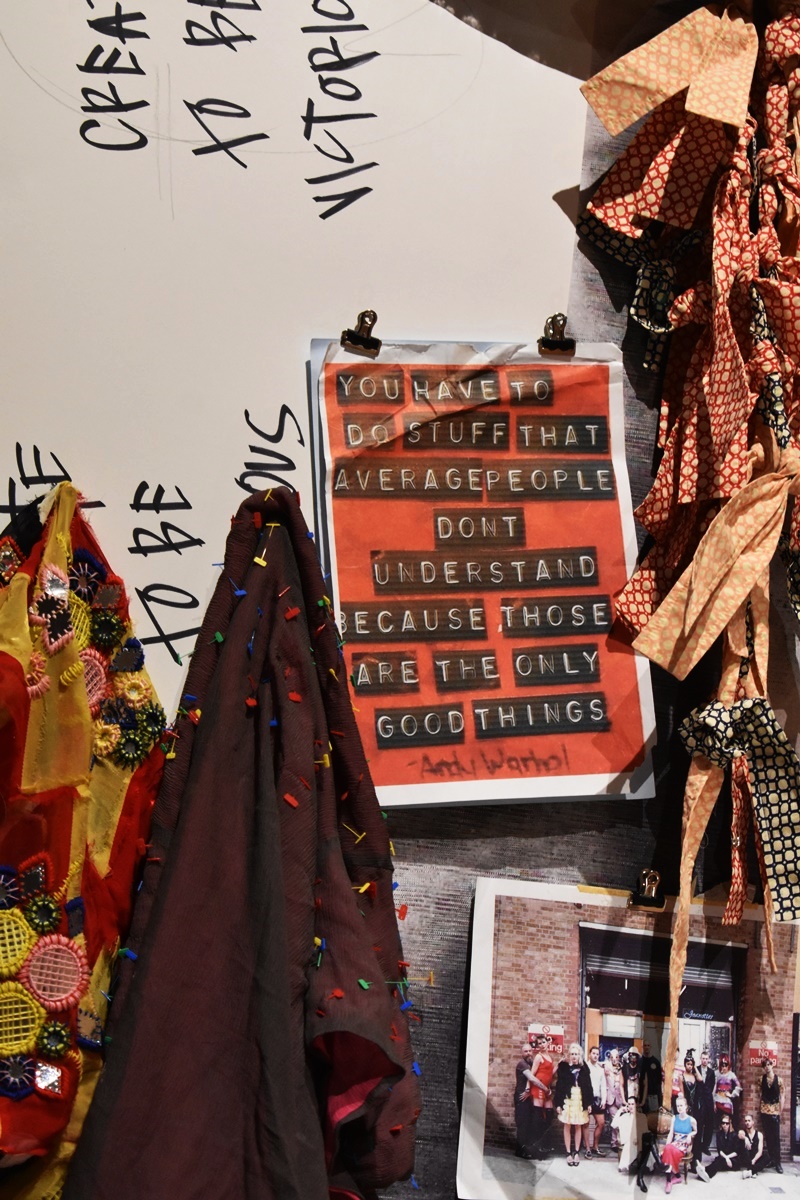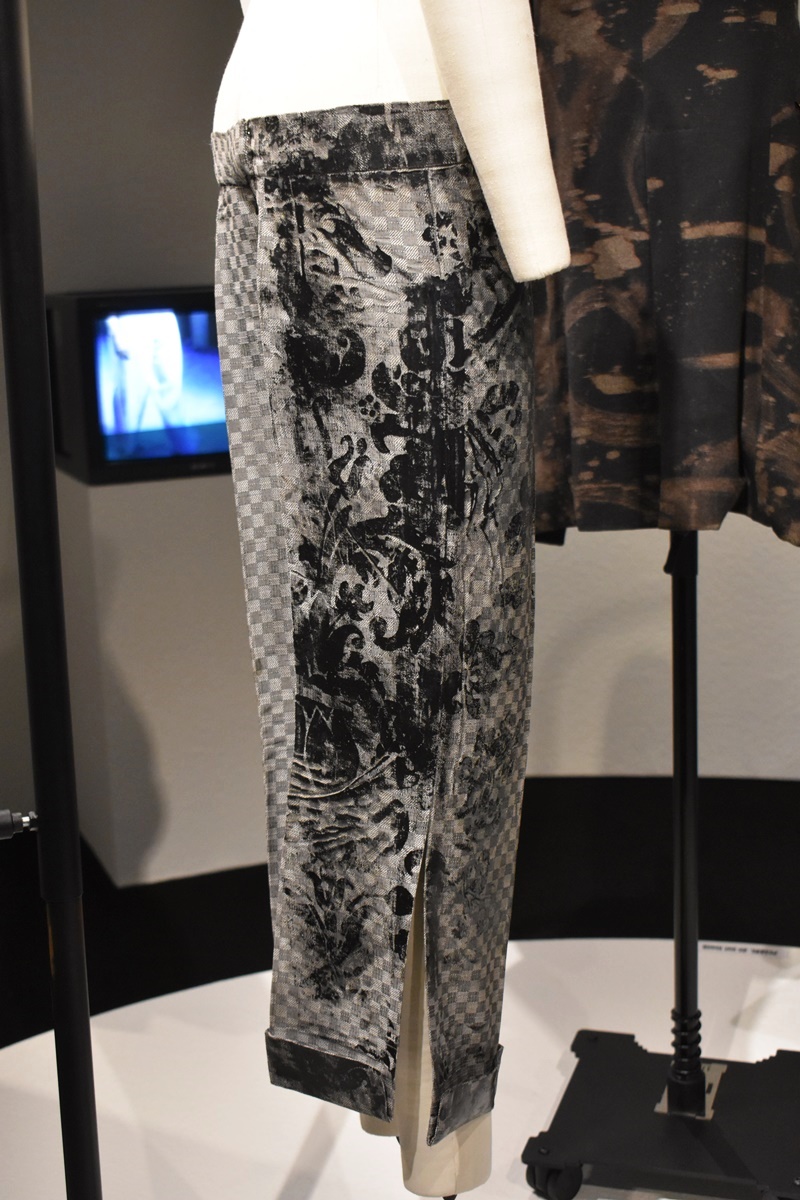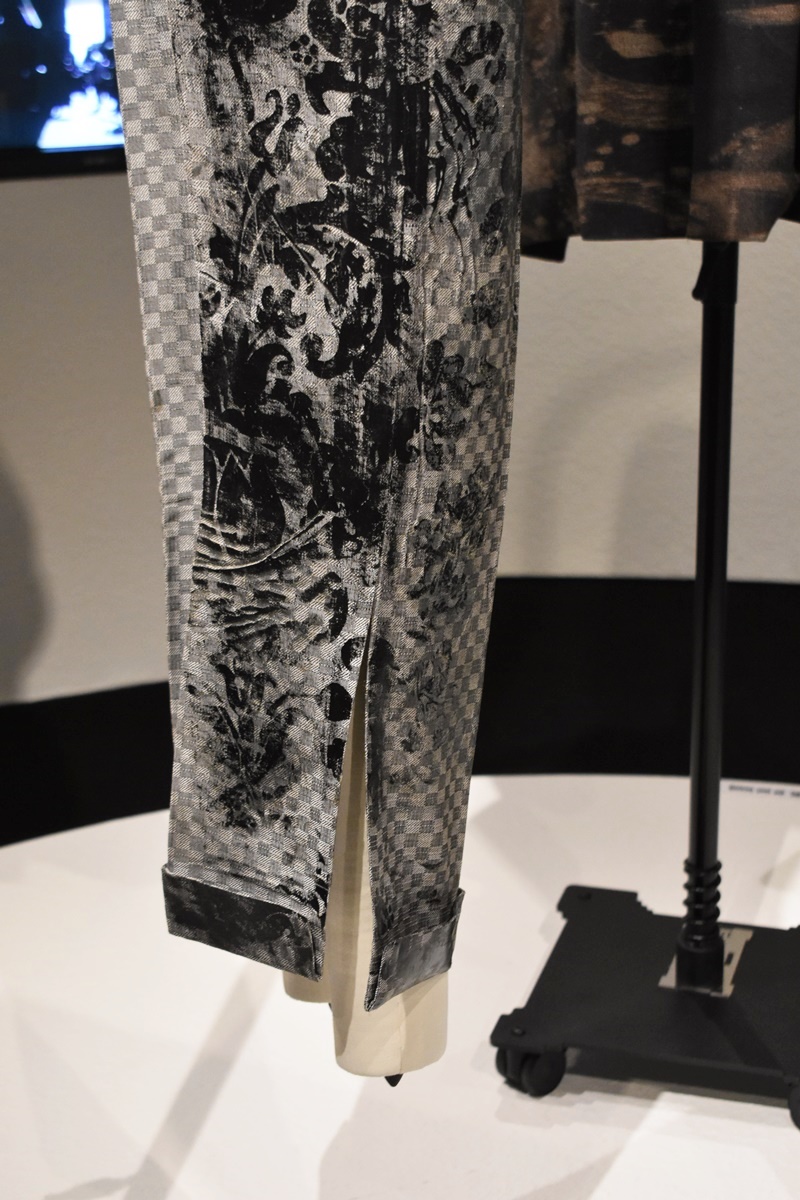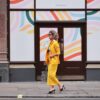Discover the Hidden Secrets of REBEL 30 Years of London Fashion. Iconic moments to see immediately.
I recently visited the REBEL 30 Years of London Fashion exhibition at the Design Museum during London Fashion Week 2024.It was an thought-provoking experience. However, the exhibition provided a fascinating insight into the journeys of emerging designers. Indeed, this exploration deepened my appreciation for fashion as an art form. Above all, it enhanced my understanding of the human experiences that shape these designers’ work.
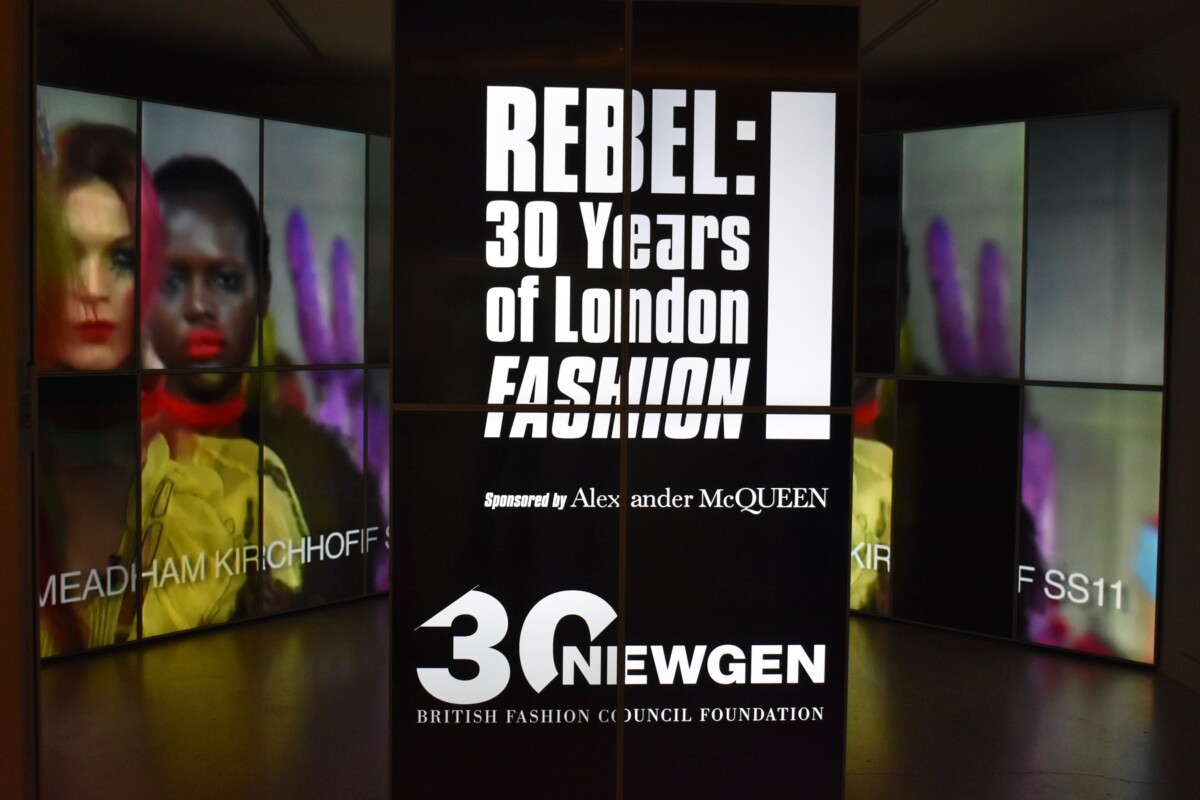
Navigating the creative landscape can be challenging and rewarding as we prepare for London Fashion Week in February 2025. Likewise, the evolution of creativity is a complex journey, often marked by moments of self-discovery and innovation that I have experienced as a fashion creative during London Fashion Week.
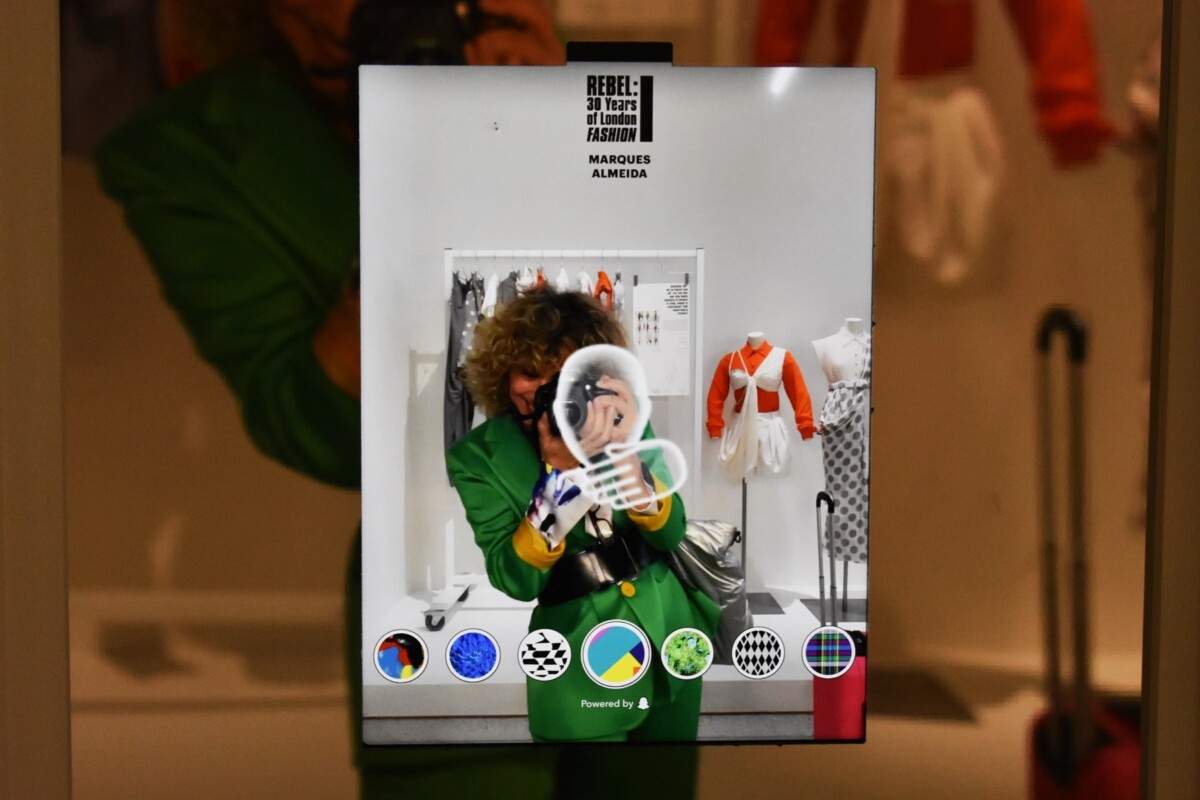
Sarah Mower, Vogue’s chief critic and the exhibition’s guest curator, witnessed and played a direct role in this history. Collaborating with senior curator Rebecca Lewin from the Design Museum, Mower divided the exhibition into distinct rooms that showcase the various factors driving the bold innovation that has characterized British fashion over the decades.
“When I’m travelling with Vogue Runway, and people want to know what’s going on in London, they always ask me: How is it that these incredible individual designers come out of London?” Mower says. “So I thought the curation of it should offer an answer to that.”
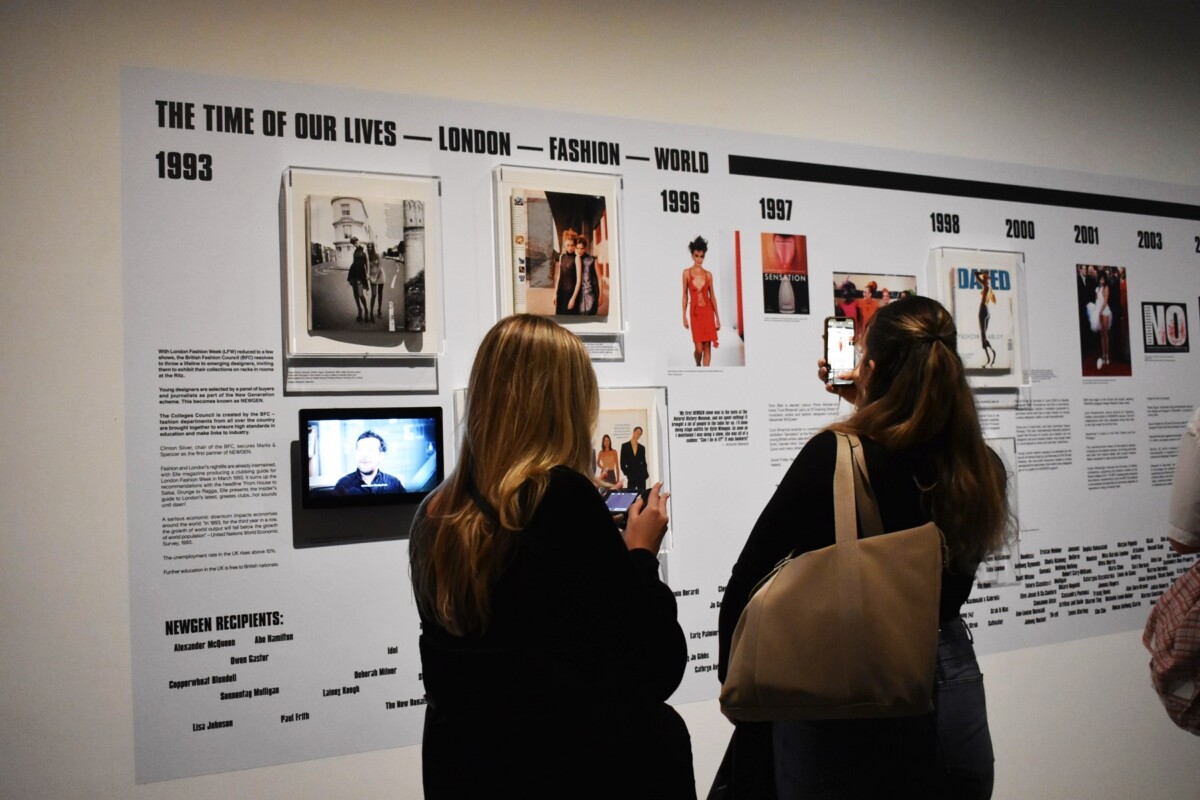
Today, I would like to delve into the early stages of London’s designers’ careers, a period that is not just formative but also a testament to their resilience and determination. I observed their raw talent and experiences to create mastery. How do they transform simple ideas into extraordinary works of art? This exploration is vital as designers in London develop their unique voices and styles. That is a process that is both challenging and rewarding.
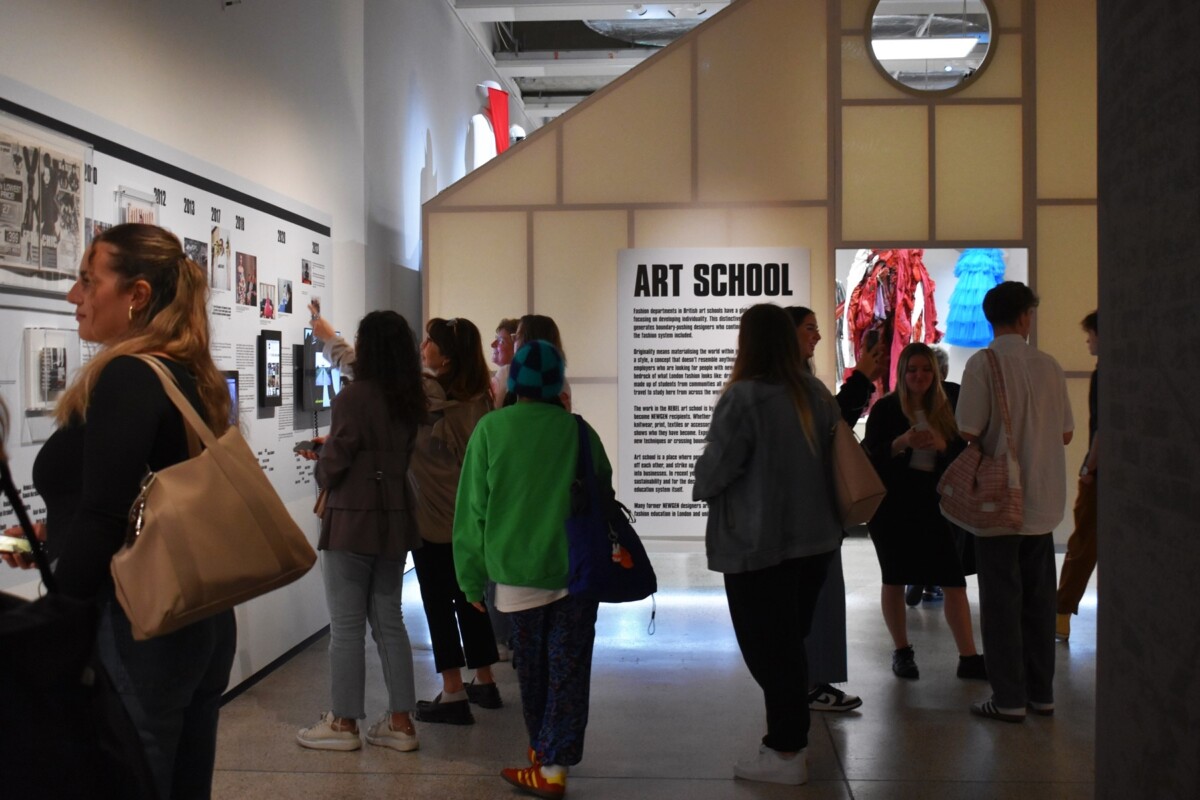
♦Unlock the Secrets: REBEL’s Bold Journey Through London Fashion.
In the first room of REBEL 30 Years of London Fashion, I was captivated by a vibrant display of gowns by Jonathan Saunders, Louise Gray, Duro Olowu, and Richard Quinn. However, this collection beautifully embodies London’s role as a leading fashion hub. Moreover, It shows the fierce determination of London’s designers to forge their paths, reflecting the rich diversity of perspectives that shape the city’s dynamic fashion landscape.
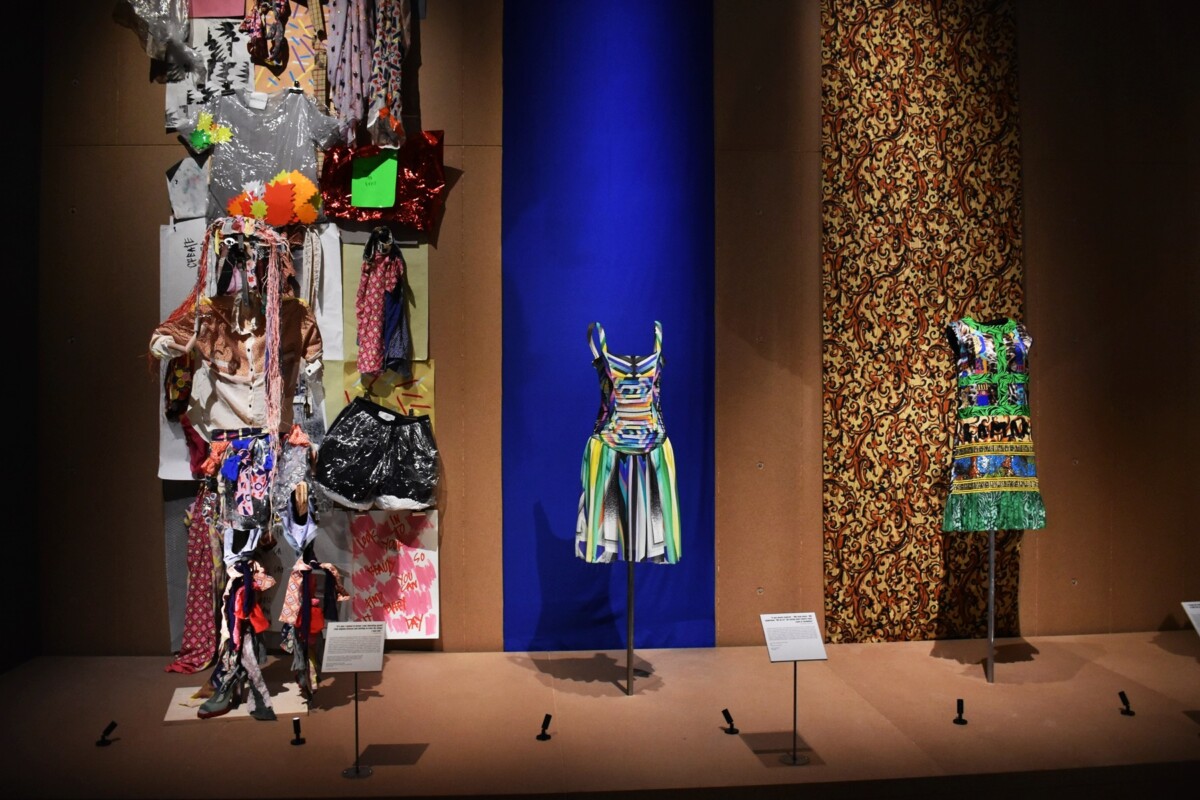
London stands out for its lack of strict guidelines for fashion designers. Instead, these designers have the freedom to draw from diverse experiences, interpreting the world through their unique perspectives. This personal approach allows them to explore and share their individual stories. As a result, their narrative-driven designs gain depth and authenticity, resonating with audiences on a more intimate level.
1) Jonathan Saunders: “It was dancer-inspired – ’90s deep house, ’30s modernism. ’70s op art. The feeling when colours react clash or harmonise.”
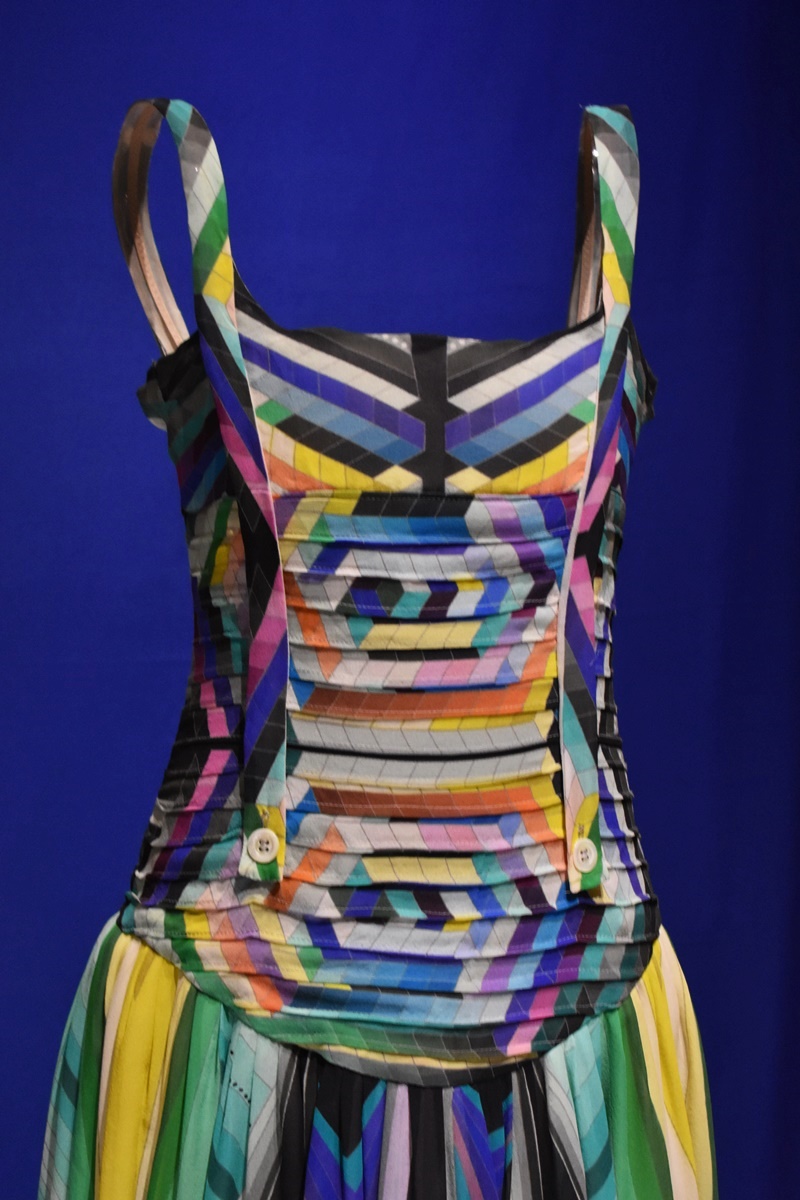
Jonathan Saunders was a key figure in London’s vibrant print, colour, and party wear revival following the post-9/11 fashion slump. His first NEWGEN show in 2024 drew inspiration from Victor Vasarely’s art, M.C. Escher’s geometric designs, and Glasgow’s late 1990s rave culture. Moreover, he studied printmaking at the Glasgow School of Art. He earned his master’s in fashion and print from Central Saint Martins in 2002. While teaching at Brixton Printworks, he secretly worked to screen-print his debut collection at night.
2) Louise Gray: “It’s how I wanted to dress! I was liberating myself from ladylike dresses and starting to trust the things I was into.”
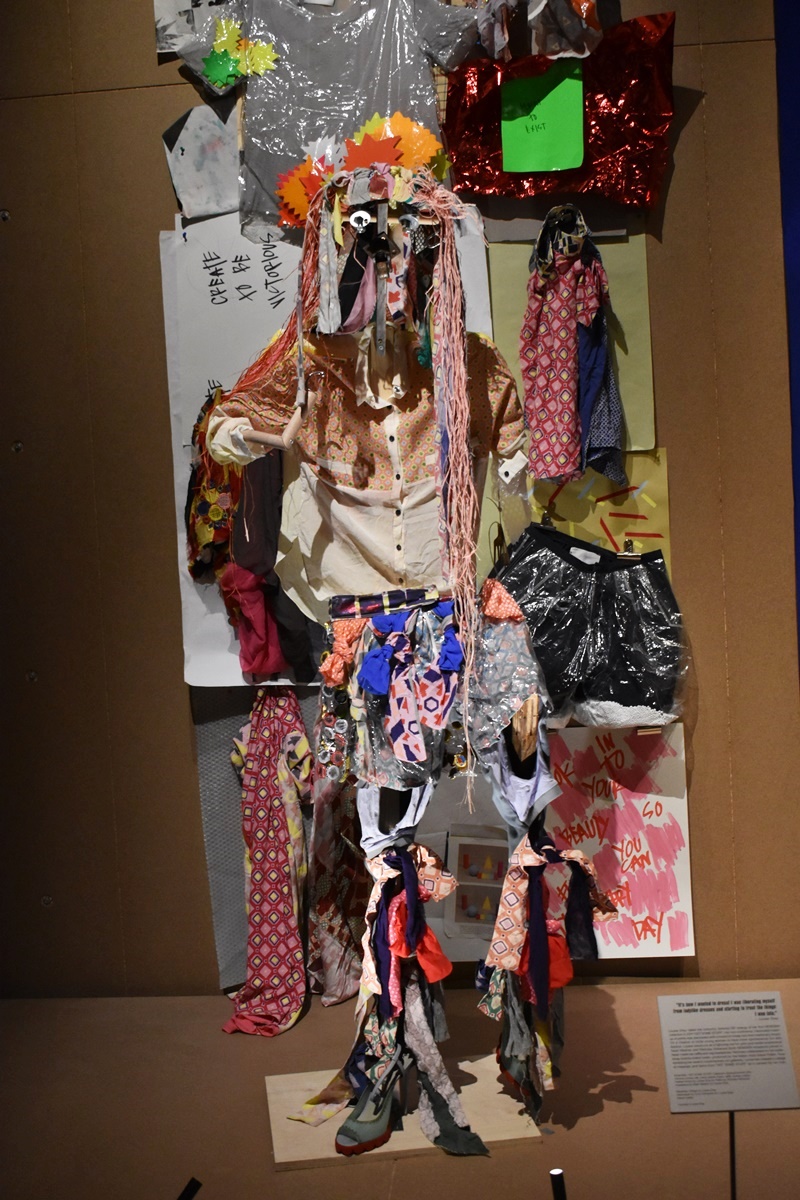
Louise Gray defined the vibrant, feminist DIY spirit of her first NEWGEN collection in 2011 with the phrase “GET SOME STUFF.” However, her bold mix of prints incorporated inexpensive items from stationery shops, aiming to inspire young women to enjoy fashion. Notable collaborators included NEWGEN recipients Nasir Mazhar. He created headpieces from raffia and rags. Nicholas Kirkwood designed bubbly-soled ankle-strap heels for the Italian brand Pollini.
Behind the Scenes of Alexander McQueen’s Masterpieces: Untold Stories and Inspirations.
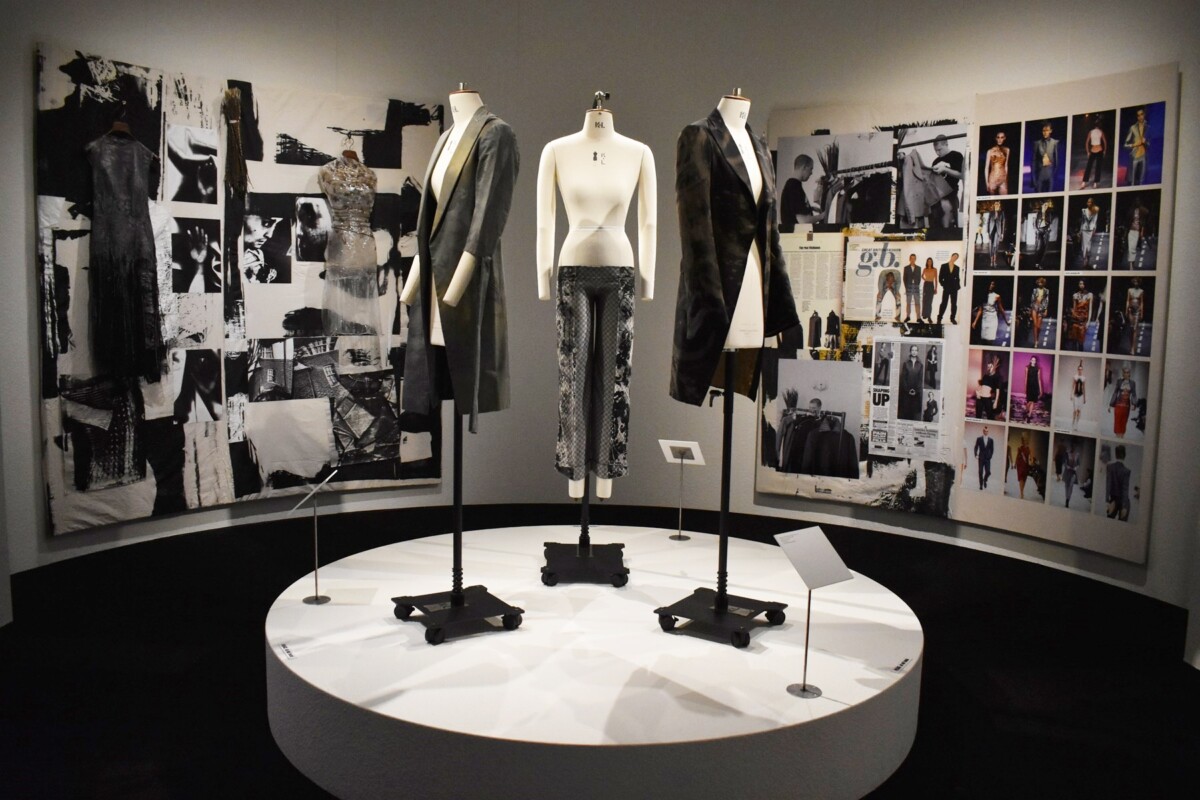
As I entered the Lee Alexander McQueen exhibition, I was captivated by the transformative power of creativity in fashion. McQueen’s influence on the future of fashion design is undeniable. His energy, evident in the vibrant life of London, was truly magical. This experience demonstrates that remarkable things in fashion arise when creativity becomes integral to one’s identity, reflecting one’s background and aspirations.
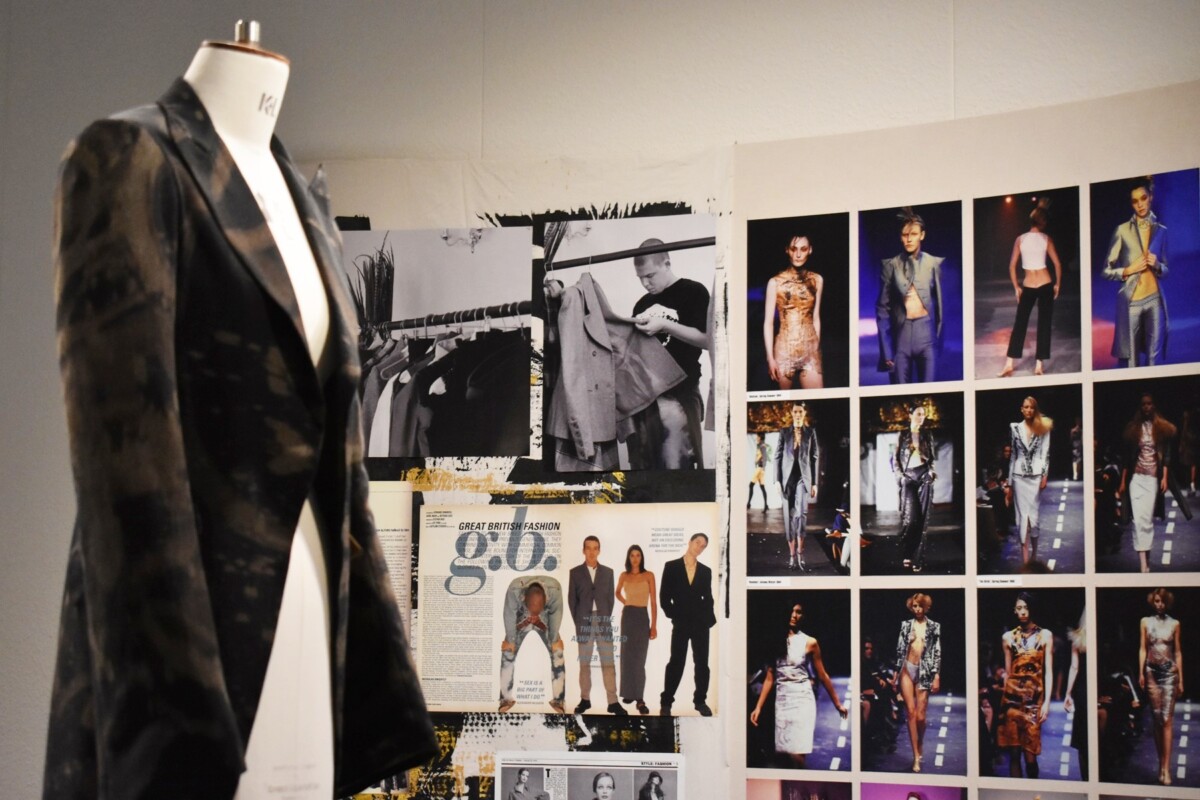
Lee Alexander McQueen emerged as a remarkable talent during a crucial period in the fashion industry, mainly due to the innovative initiative by the British Fashion Council. In 1993, the first year of this program aimed to support and uplift young designers in London amid a challenging economic recession.
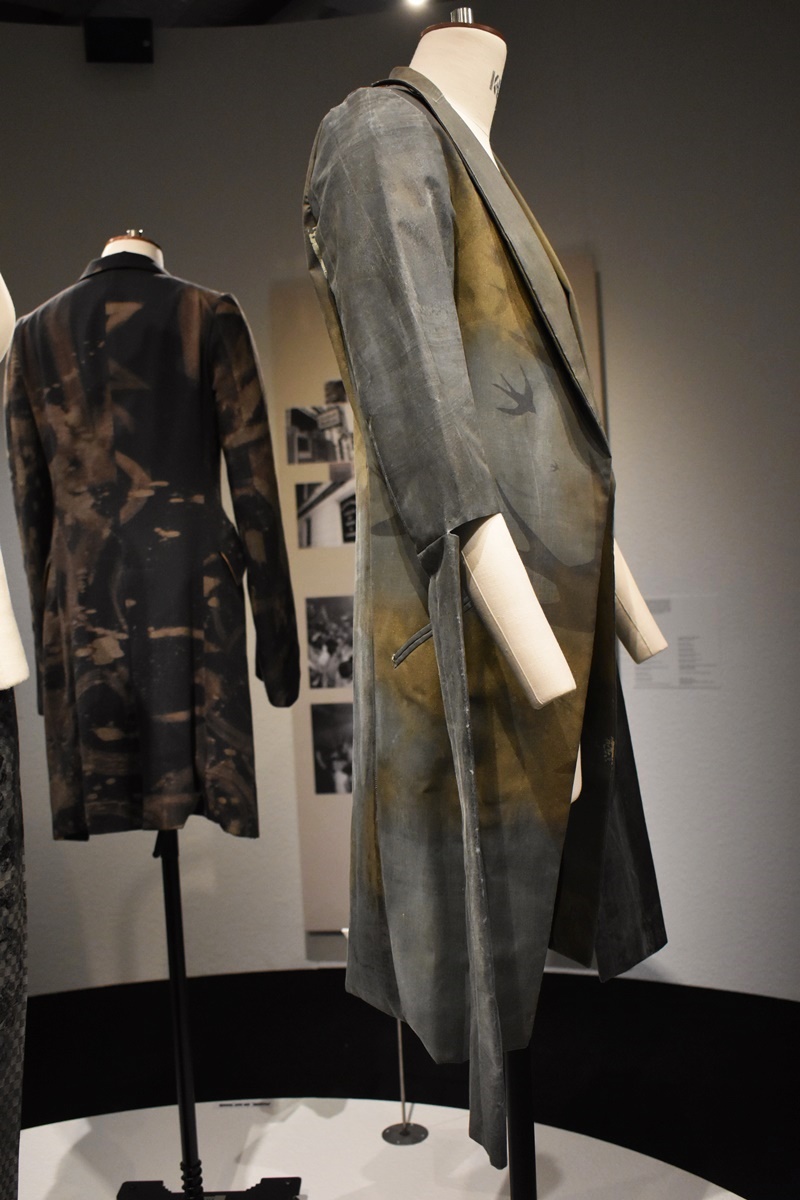
Moreover, It provided essential financial assistance, mentorship, and a platform for these designers to showcase their creativity. It played a significant role in McQueen’s early journey. In short, his debut collection, “Taxi Driver,” was notable for its innovative designs and unconventional venue—a hotel room at the Ritz—adding a sense of intimacy and intrigue to the presentation.
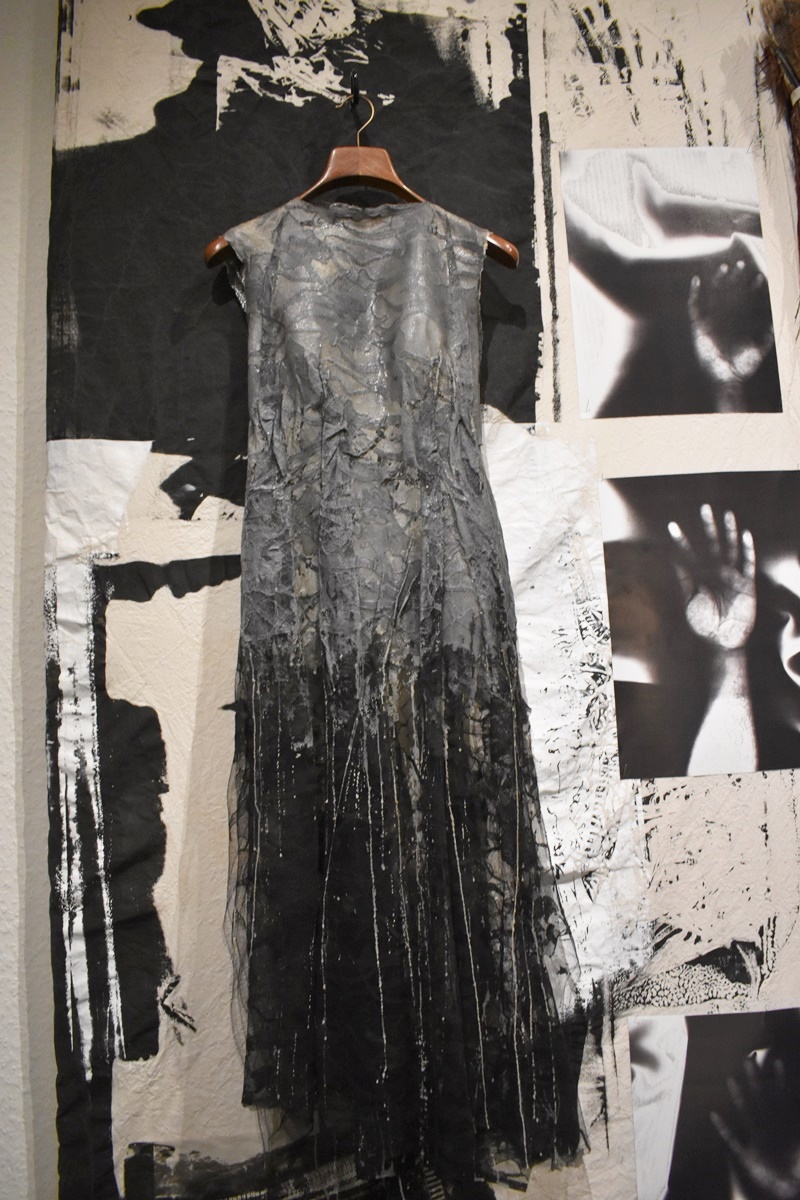
Alexander McQueen: The Story of Taxi Driver. “Our life was our moodboard” Simon Ungless.
Raised in a council house in Tooting Bec, South London, McQueen’s journey in the fashion industry was greatly influenced by his collaboration with print designer Simon Ungless. As they explored the dynamic and eclectic nightlife of early 1990s London, their experiences infused their creative work with a sense of rebellious energy and a raw aesthetic.
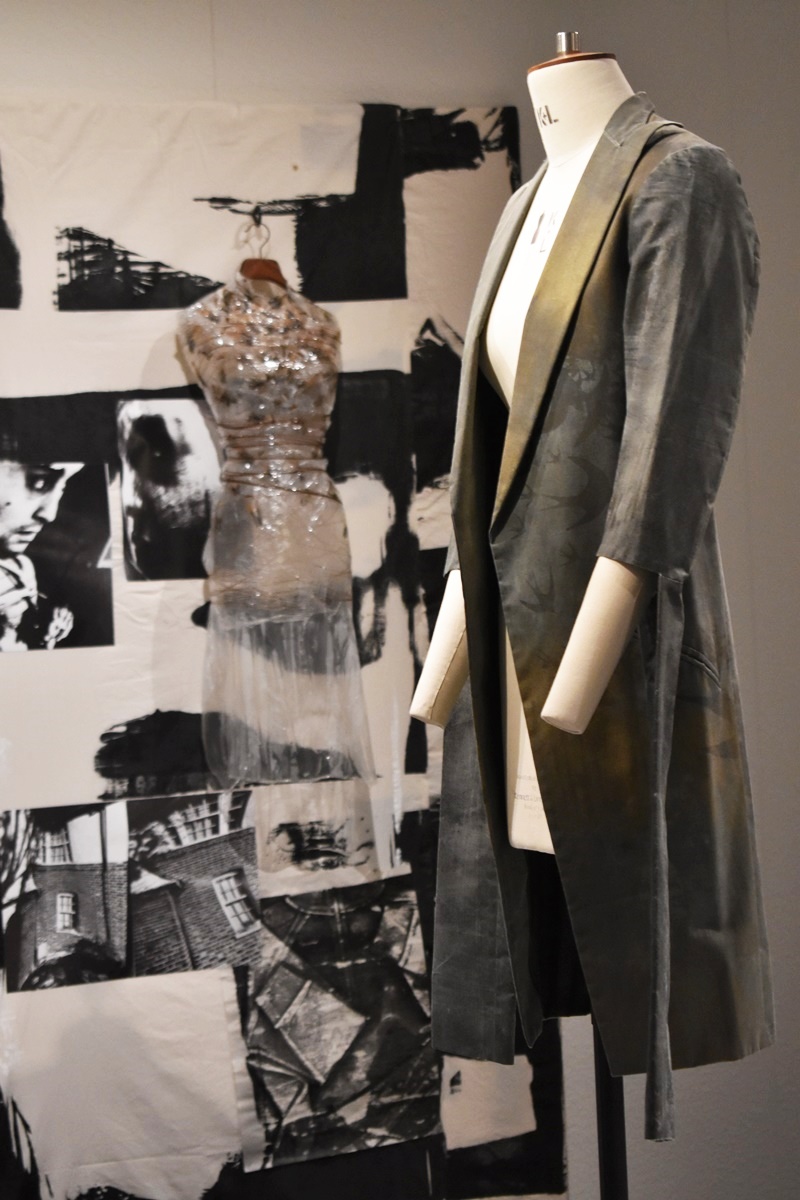
However, they transformed their modest home into a vibrant mood board filled with fabrics, sketches, and inspiration. However, this creative environment allowed McQueen to experiment with groundbreaking designs. The now-iconic “bumster” trousers challenged traditional norms regarding women’s clothing.
